Case Studies
Here are a few case studies, of clients we have previously helped on projects.
McDonald’s & Welbilt had a strategic need to create awareness and menu pipeline for Convotherm oven brands.
As the world’s largest quick service restaurant chain with over 18,000 locations,we created and ran workshops for McDonald’s Owner Operators,to establish how to optimise their oven operations.
In tandem with the McDonald’s team,we created a scope of works for the project,as well as the metrics required to establish successful delivery of intelligence.
The events involved multi-disciplinary teams,as well as operational excellence.
The staffing involved 55 chefs,plus runners and 30 support staff.
We led innovation teams with McDonald’s internal staff,plus supplier chefs, on the brief provided.
Result: Succeeded in hosting 50 chefs plus other key stakeholders,over 5 days leading to the global release of the oven,for the system.
YUM/ KFC, USA, had a strategy to increase sales by 25% in two years.
As the global leader in fried chicken,we assisted and then led the new project to enable menu extension,through innovative use of equipment.
We created a team to assist in the brief review, and initial creation of the ideas.
With our YUM coach support,we crystallised ideas that were true to the scope and functionally acceptable to both operations,and marketing.
We created costs and build plans for the project,to include all upfront costs.
We devised a full board level presentation to match the live food ideas,with concept and reasoning for customer engagement.
Finally we shipped all food and equipment for the full live dress rehearsal from Tampa, to KFC HQ, Kentucky,USA.
Five months after the start of the project, we created a live presentation of the brief, equipment solutions and menu extensions.
Result: Succeeded in showcasing both equipment solutions within the brand – as well as menu extension,with no additional costs or new food products.
Tampa based restaurant chain with 215 locations had identified need to reduce the order to table time by 30%.
As a local restaurant operator with 215 locations,we shaped and led a project to increase efficiencies through improvements in equipment design, and adjacencies with labour.
We undertook kitchen and restaurant visits before,during,and after service
We discussed all the options with the team and captured their thoughts about better efficiencies, labour reduction in energy,with improved placement of equipment.
Following this we created a layout on paper to improve both the cooking line, adjacencies,and staff energy.
Key learnings came from the ability to set up and test the new agreed equipment line in Tampa kitchen,with the chef’s team from the local restaurant,who created the entire menu from a zero base.
We ran a full live simulation with checks from the prior nights’ service, and the in-house team were able to show the same amount of tickets were produced by the chefs, in 30% less time. This equated to more orders cooked, more customers seated faster, and table turnover increased.
Result: We were successful in illustrating that the placement of equipment in the kitchen line,can impact the staff to cook more efficiently, have less waste, chefs are therefore less tired, so more productive for longer,and better customer satisfaction scores as they didn’t have to wait for their food.
Southern Californian QSR chain requested assistance to improve food quality,and customer satisfaction scores across all 2,200 restaurants.
As the West Coast leader in burgers and fish tacos with 2,200 restaurants, the Jack in the Box team wanted to explore and investigate hot holding techniques.
We received the brief from the client – set up a weekly call with both the internal chefs,their operations and engineering teams.
We created a review of all hot holding solutions available today, as well as new technology for the future – not yet released.
We crafted a success matrix for the customers food products,and the equipment to test.
We produced and illustrated all menu items to their gold standard,and then created the hot holding options across all platforms for assessment by the executive team, QA and operations.
Result: Succeeded in creating the need for a store test and then a subsequent roll out for the chain.

